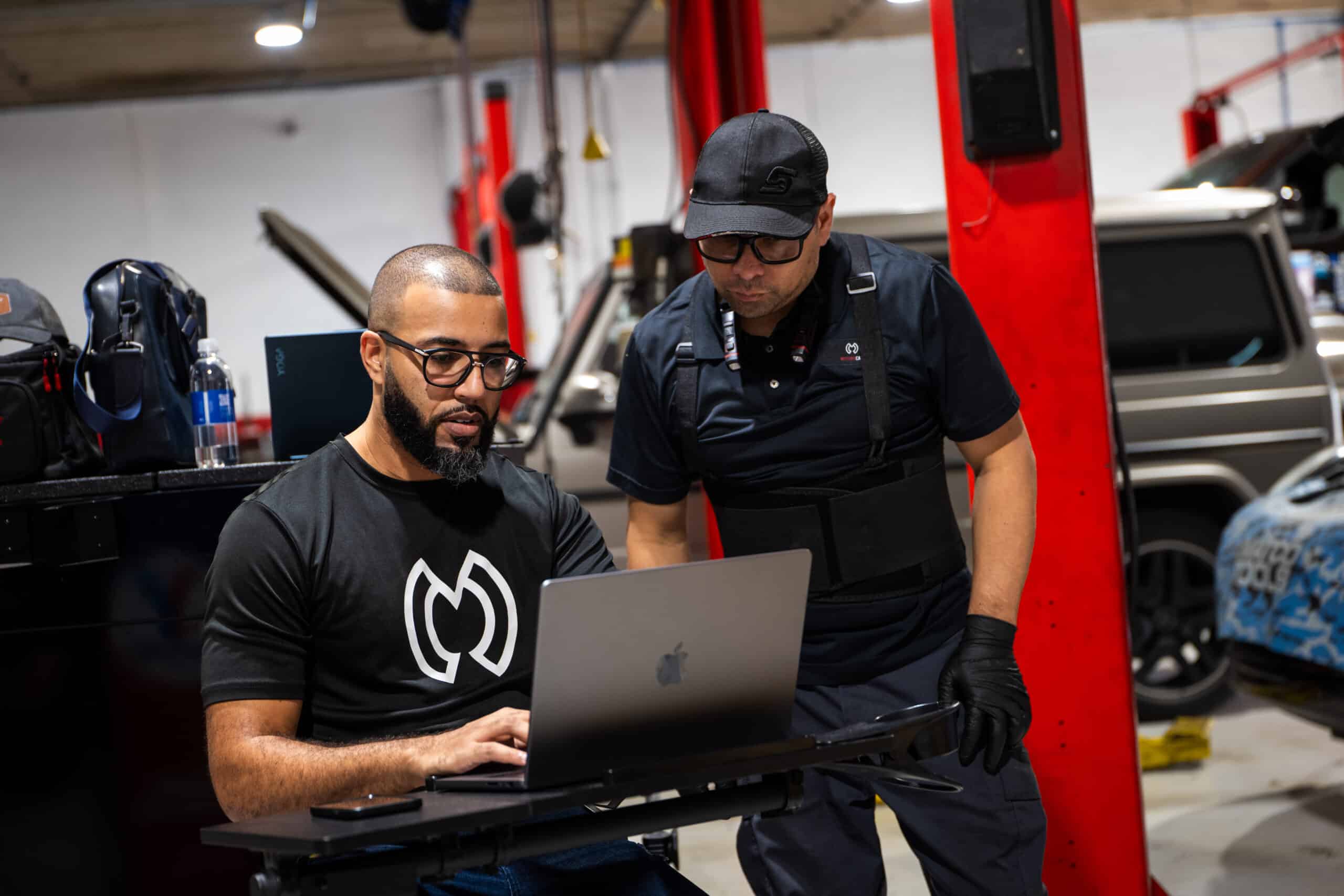
Welcome to the second installment in our 3-part labor rate series brought to you by The Repair Shop of Tomorrow. After exploring the importance of understanding your current and desired gross profit numbers in the first post, their team will now delve into evaluating and optimizing your shop’s labor rate by helping you take a look at the health of both your Posted Labor Rate and Effective Labor Rate. (If you missed part 1, we encourage you to go back and read it to learn what profit-related numbers you must understand before starting to determine your labor rate.)
Evaluating the health of your current labor rate
Your Posted Labor Rate is the labor rate that your customers see on their invoice. To determine its effectiveness in getting you the margins you need to hit your profit goals, you must understand two critical figures:
- Your Fully Loaded Technician Cost
- Your Effective Labor Rate
Fully loaded hourly technician cost
This cost encompasses all expenses incurred from employing a technician, including base compensation, federal and state taxes, and benefits. For example, if a technician’s base hourly wage is $35, a more accurate fully loaded cost might be $49 per hour when considering a multiplier of 1.4 to account for additional expenses. (Note: Your multiplier may be different depending on the benefits you offer to your technicians).
A general principle is to set your Posted Labor Rate at 3x* your loaded technician cost which means your labor rate would be $49 X 3 = $147.
*We used the 3x multiplier for the sake of ease in the example, but we at the Repair Shop of Tomorrow recommend that your posted labor rate be set to achieve 20% or more in net profit. For this reason, we encourage you to figure out your shop’s break-even numbers first (see post 1) which will help dictate the actual multiplier your shop should use.
Effective Labor Rate
Your Effective Labor Rate is a crucial metric, as it shows the actual revenue generated per technician hour worked.
How to calculate your Effective Labor Rate
| Labor Dollars Collected ➗ Billed Hours = Effective Labor Rate |
Our coaches at the Repair Shop of Tomorrow recommend that your Effective Labor Rate be within 10% of your posted labor rate. This means if your posted labor rate is $147, your ELR should be no less than $132.30.
Comparing your Posted Labor Rate to your Effective Labor Rate
Let’s assume your posted labor rate is $147 (3x the fully loaded cost of $49) and look at three scenarios:
Scenario 1 — You collect $73,500 from 500 billed hours in a month.
$73,500 ÷ 500 = $147 Effective Labor Rate
In this scenario, your Effective Labor Rate is $147, aligning perfectly with your posted labor rate.
Scenario 2 — You collect $67,500 for 500 billed hours.
$67,500 ÷ 500 = $135 Effective Labor Rate
In this scenario, your Effective Labor Rate is $135, which shows a discrepancy between the posted labor rate of approximately 8.16%, which is within the 10% benchmark. However, this number should be monitored to make sure it does not keep going down.
Scenario 3 — You collect $63,000 for 500 billed hours.
$63,000 ÷ 500 = $126 Effective Labor Rate
In this scenario, your effective labor rate is $126, which means the percent discrepancy between the posted labor rate is approximately 14.29%, which falls outside the 10% benchmark. This is a $21 per hour shortfall from your posted labor rate. Over 500 hours, this would result in a $10,500 loss for the month. If this trend continues, it could lead to a potential loss of $126,000 in labor dollars per year.
Comparing your Posted Labor Rate with your Effective Labor Rate can provide significant insights:
In Scenario 2, the Effective Labor Rate of $135 is within this 10% range of the Posted Labor Rate of $147, suggesting that while there is a shortfall, it is within an acceptable margin. However, Scenario 3 shows an Effective Labor Rate of $126, which is outside the 10% range, indicating more significant issues that need to be addressed to avoid substantial losses.
A lower Effective Labor Rate suggests potential issues such as underbilling, inefficiencies in labor management, and/or excessive discounting. Here are tips for improvement:
- Service Advisor Training: Focus on accurate service tracking and billing
- Reduce Discounts: Maintain firm pricing to protect your margins and ensure profitability
- Matrix Pricing: Adjust labor rates based on job complexity or demand. Matrixing your labor will always have a positive impact on your ELR.
Understanding and optimizing your labor rate isn’t just about setting the right numbers — it’s about making strategic decisions that enhance operational efficiency and profitability. By carefully analyzing your Posted Labor Rate and Effective Labor Rate, you can identify areas for improvement and make informed decisions that will drive your shop’s success forward.
See the next and final post in our labor rate series to learn more about matrix pricing through a labor matrix. If you missed the first post in the series, we encourage you to go back and read that post too.
About Repair Shop of Tomorrow
Being A NAPA Autocare Endorsed Coaching & Marketing Resource, Repair Shop of Tomorrow was born out of Dave Justice’s vision for a comprehensive program that would equip shop owners with the necessary tools for success. During his tenure on the NAPA National Auto Care Advisory Council, Dave recognized the industry’s need for such a program. With the launch of his web-based time management system, Labor Profit Management (LPM), in 2013, the path to creating Repair Shop of Tomorrow became clear. LPM gained notable recognition in industry publications, and its national launch by NAPA in 2013 provided shop owners nationwide with the means to measure and manage their labor profits effectively. Following the sale of his stores in 2016, Dave could fully devote himself to his true passion: assisting shop owners in achieving success. Thus, Repair Shop of Tomorrow was established, offering comprehensive programs that encompass expert coaching, standard operating procedures (SOPs), and marketing designed to deliver tangible real-world results. With a commitment to empowering success, Repair Shop of Tomorrow has transformed shop owners’ businesses on a national scale, providing the guidance and support needed to thrive in a competitive industry.



